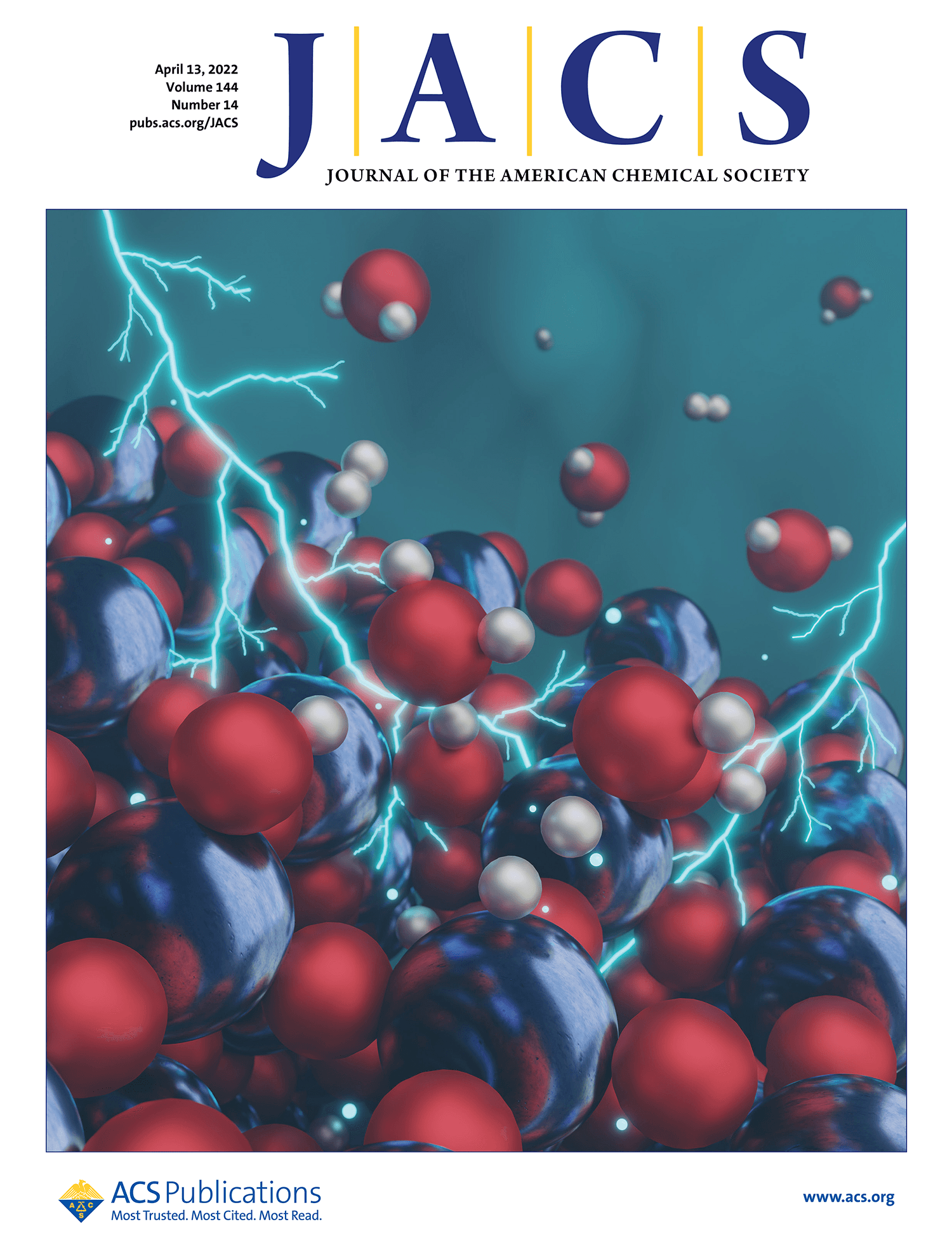Engineers use catalysts in a wide range of applications, from food processing to chemical manufacture. Hence, developing effective, environmentally friendly catalysts is a priority.
 A graphical representation of new chemical catalysts appeared on the cover of the Journal of the American Chemical Association. Image Credit: Evan Miu.
A graphical representation of new chemical catalysts appeared on the cover of the Journal of the American Chemical Association. Image Credit: Evan Miu.
A new study headed by the University of Pittsburgh Swanson School of Engineering might lead to the development of new, long-lasting catalysts made of tungsten oxide and similar materials.
The team employed computer simulations to figure out how tungsten oxide interacts with hydrogen at the molecular level and the results were verified in the lab.
Ph.D. Candidate Evan V. Miu, Assistant Professor James McKone, and Associate Professor and Bicentennial Alumni Faculty Fellow Giannis Mpourmpakis from the Department of Chemical and Petroleum Engineering published a paper detailing the findings on the cover of the Journal of the American Chemical Society (JACS).
Tungsten oxide is a catalyst that can be used to accelerate sustainable chemical conversions by using sunlight or renewable electricity. This chemical compound has a unique way of interacting with hydrogen atoms that makes it especially good at participating in chemical reactions where hydrogen needs to be produced or used.
Giannis Mpourmpakis, Associate Professor and Bicentennial Alumni Faculty Fellow, Department of Chemical and Petroleum Engineering, University of Pittsburgh Swanson School of Engineering
The types of chemical reactions that we are the most excited about include the use of hydrogen to take carbon dioxide—the primary culprit in global warming—and turn it into useful fuels and chemicals.
James McKone, Assistant Professor, University of Pittsburgh Swanson School of Engineering
Unlike most catalysts, tungsten oxide can inject hydrogen into its three-dimensional crystal lattice. The researchers’ extensive modeling revealed that this process influences what happens at the catalyst’s surface.
Using the team’s computational technique to anticipate catalytic characteristics, the researchers can develop a whole new family of catalysts based on tungsten oxide and comparable molecules.
McKone added, “It is not an overstatement to say that we can draw a straight line between the subtle science contained in this study and the possibility of reinventing a huge swath of chemical manufacturing to make it more environmentally sustainable. We can design catalysts to deliver hydrogen in just the right way to make chemical conversions that run on water and electricity just as efficiently as what we do today using fossil fuels.”
The McKone Lab and Mpourmpakis’s CANELa Lab collaborated on this research, with lead author Miu working as an NSF graduate fellow on bridging thermal and electrical catalysis using experimental and computational methodologies.
Working with professors Mpourmpakis and McKone has given me an unbelievable opportunity to operate at the interface of theory and experiment. These complementary perspectives helped us deeply understand how metal oxide bronzes catalyze hydrogen, and we are excited to apply our findings and make meaningful steps towards more sustainable chemical processes.
Evan V. Miu, Lead Author and PhD Candidate, University of Pittsburgh Swanson School of Engineering
Journal Reference:
Miu. E. V, et al. (2022) The Sensitivity of Metal Oxide Electrocatalysis to Bulk Hydrogen Intercalation: Hydrogen Evolution on Tungsten Oxide. Journal of the American Chemical Society doi:10.1021/jacs.2c00825.